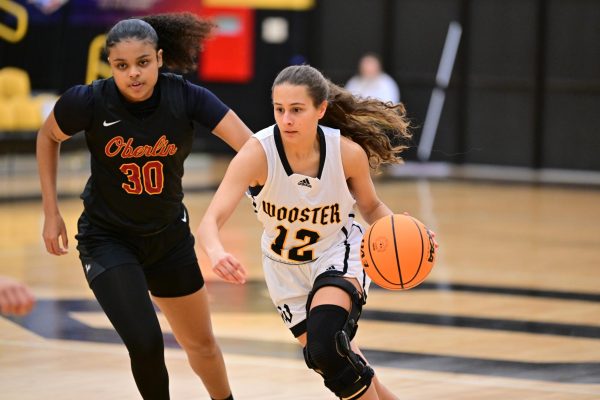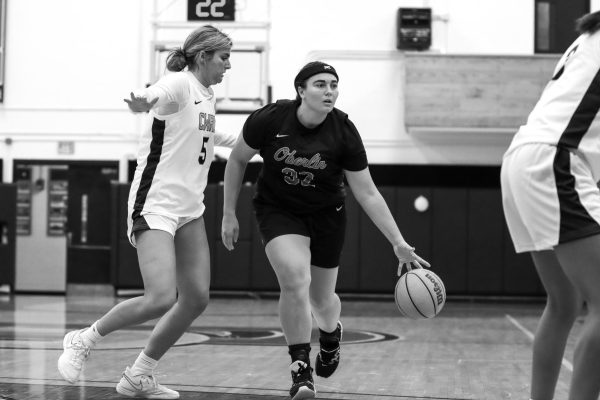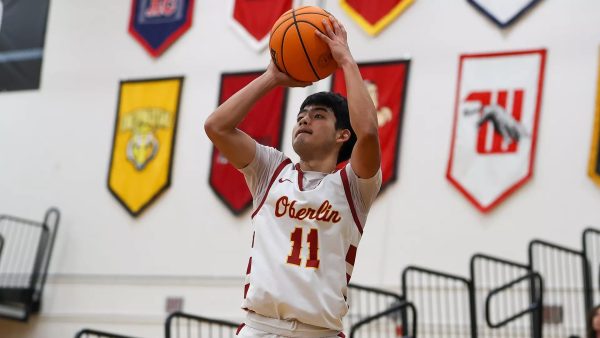The Jewish Development in the NBA and Oberlin
There are numerous professions in which Jewish people have achieved notable success, but the world of professional sports has not historically been one of them. As a result, many American Jews have long been intrigued when Jewish athletes emerge in a professional sport, especially when they do well — consider Sandy Koufax.
This fascination — yes, there are many websites devoted to this issue — is even apparent in fans who are not Jewish. A lot of jokes grow out of this preoccupation, which brings us to the Oberlin men’s basketball team.
At a school with a 23 percent Jewish population, 12 of the 20 players on this year’s squad — 60 percent — identify as Jewish.
“This [dynamic] has definitely established a unique bond between me and some of my Jewish teammates,” said College senior and captain Eli Silverman-Lloyd. “Most of us have never been on a team with so many Jews before — it’s fun to talk about.”
This Jewish representation is largely a result of the influx of the now-sophomore class, in which five of the six players are Jewish. Many of these players hail from coastal cities like New York and San Francisco, which are known for their large Jewish populations.
“We definitely joke around about it a lot,” said Jordan Armstrong, one of the six Jewish players in the sophomore class. “We laugh about a lot of the stereotypes of Jewish athletes.”
None of this should be surprising to anyone who knows the roots of the National Basketball Association and the significance that many Jews had in its growth. Many Jews growing up in American cities quickly embraced the sport, which required just a court, two baskets, and no outdoor field. The first basket ever scored in the NBA was shot by Ossie Schectman, a Jew from Queens, in 1948. One of the most renowned NBA coaches in history was Red Auerbach, a Jew from Brooklyn. The Jews of that early basketball era could survive in the early NBA but were slowly phased out once height became a much bigger factor in success on the court. Nevertheless, the significance of Jewish basketball players remains.
According to Rabbi Shlomo, the co-director of Oberlin’s student Chabad organization, this year’s weekly holiday dinners at Chabad House have regularly hosted at least six members of the men’s basketball team.
“The Jewish players on the team love going to eat at Chabad House,” College junior Abe Kuhn said. “We always eat as much as we possibly can.”
The men’s basketball team hasn’t always been a fixture at Chabad House. According to Rabbi Shlomo, there tends to be a different team each year with a large Jewish membership that spends a lot of time at the family’s house, eating, celebrating, and spending time with the kids.
“We’ve gotten to know some basketball, baseball, soccer, and field hockey players pretty well over the years,” said Rabbi Shlomo, who also noted that the men’s soccer team used to have such a large crowd of Jews that they played an annual “Jews vs. Gentiles” scrimmage.
And, of course, the presence of the basketball players at Rabbi Shlomo’s house isn’t limited to just Jewish folk. According to Silverman-Lloyd, the non-Jews on the team often spend time at Chabad House as well, for the community and the opportunity to eat a high-protein brisket dinner prepared by Rabbi Shlomo’s wife, Devorah.
“Many of my non-Jewish teammates come to Chabad for the food and a taste of a Jewish experience,” Silverman-Lloyd said, “And they usually like it a lot and want to come back.”
Meanwhile, last Sunday, the usually hapless Cleveland Browns beat the Baltimore Ravens in overtime on a 37-yard field goal by Greg Joseph, who is Jewish and a National Football League rookie. According to Rabbi Shlomo, Joseph had been visited by a Chabad rabbi from Cleveland a week earlier, who gave him a mezuzah, a Jewish wall ornament meant to fill a home with blessings. So as Oberlin approaches the start of the basketball season, don’t be surprised to see mezuzahs on members of the men’s team’s doors.







